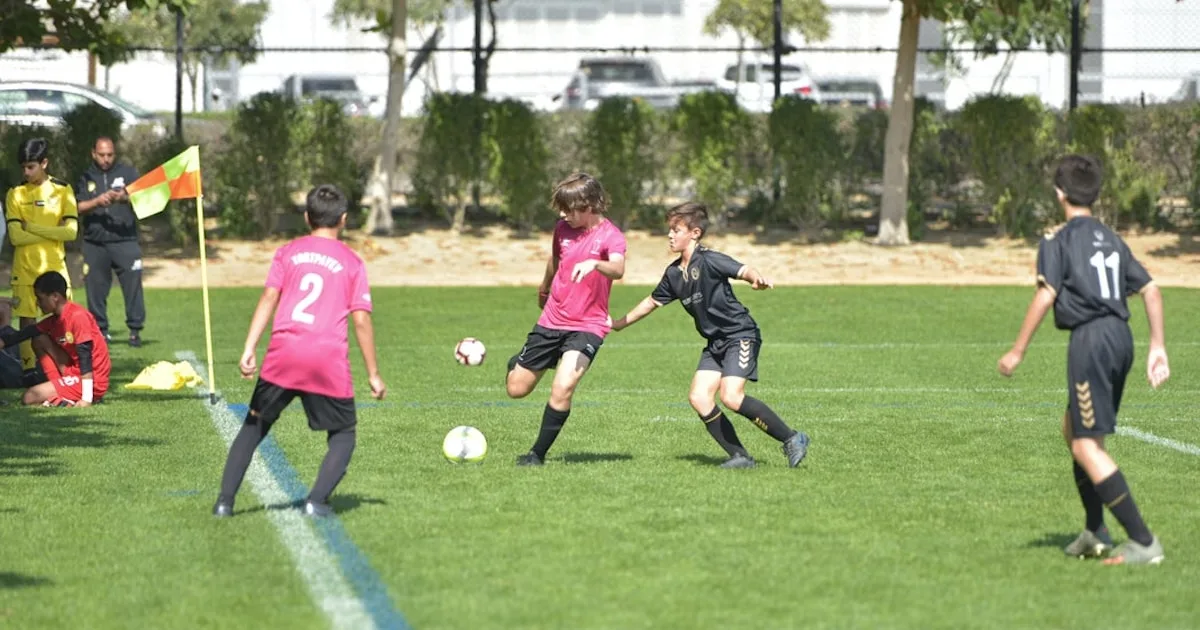
The fast pace of soccer is a big draw for kids who like to move. While charging down the field to score a goal is a dream for many players, teams need to work on youth soccer defensive drills too. After all, if the opposing team can't score against you, they can't win.
As a coach, you can change up defensive drills to make practice fun and engaging for your youth soccer players. Make drills a routine part of each practice, along with instruction based on recent games and scrimmages. That way, you're young players will know what to expect and be ready to focus at practice time.
Teaching Important Defensive Skills in Youth Soccer
To build an effective team, you need to teach your young players essential defensive skills. Make sure team members know that they should try to keep the ball out of your team's penalty area to limit scoring opportunities for the other team.
There is a lot to know to be an effective defender in soccer. But you can get your youth player on the right trajectory by teaching them these defensive concepts.
Slowing Down an Attack
For defenders, winning back the ball is always valuable. But let your defensive players know that slowing down attackers can be just as effective. Delaying the other team's route to the goal can allow other team members to catch up and put more pressure on the attacking team.
How can a defender slow down an offensive attacker? Make sure your defenders know they should stand up to attackers and get in their way - it's a simple strategy that can go a long way for young players!
Steering to the Sidelines
A critical skill every defender needs to learn is how to guide attackers to the sidelines. Why is this important? It's harder to score from the sidelines than in the middle of the field. Attackers may need to make a move to the center of the field or cross the ball into the box to make a threat. Plus, pushing attackers to the sidelines is a great delay tactic that can give more teammates time to reach the defensive end of the field.
It's not hard for players to learn how to steer opponents to the sidelines, but it does take practice. Soccer drills for kids can help defenders develop this essential skill.
Tackling
Tackling is a tactic to dislodge the ball from an attacker so that your team regains possession. While defenders can keep possession after a tackle, that's not their primary goal. Their aim is to get the ball away from the other team.
Make sure defenders know to approach attackers quickly, then pull up. They may want to stand up to the opposing player and wait for a mistake or choose to tackle. When committing to a tackle, players need to act decisively without any hesitation.
Staying on Your Feet
Lots of younger players are eager to try out slide tackles or head balls. While these skills look impressive, they can create problems if poorly timed or executed. It's easy for an attacker to rush past a defending on the ground and charge the goal. Coach players to stand up and resume play right away if they fall or slide tackle.
Keeping a Positive Mindset
Even the best defenders in the world get beat by attackers. And top teams give up goals to opponents. Defenders need to learn to keep their emotions in check and not let setbacks distract them. If defenders lose their cool, they may make a careless mistake or foul that gives an advantage to opponents.
4 Soccer Drills for Coaches to Build a Strong Defense
When coaching soccer, you need to have drills prepared before each practice. That way, you can ensure you have the right equipment on hand and let your players know what to expect.
Here are four simple defensive drills that you can use with your young players.
#1: 1v1 Defending Drill
This simple but effective two-player drill requires only a few cones and a soccer ball. Once you teach it in practice, your players can easily replicate it at home with a partner. It teaches young players how to stay in front of attackers and to help guide them to the sidelines.
#2: Agility Drill
Agility is essential for both defenders and attackers -- and this simple drill can help. Divide your team into two groups and tell the attackers to try to reach an endpoint marked by two cones within five seconds. Your defenders need to prevent attackers from reaching the target.
#3: Footwork Drill
For this individual drill, you'll set up four cones about two yards apart, with another cone five yards away and a final cone seven yards beyond that. Instruct players to start at the first cone and charge each of the following three cones and circle around them. Have them run through the next cone and pause briefly before sprinting past the final one.
#4: Triangle Drill
This individual drill requires three cones set up in a triangle shape. Players will knock the ball sideways the length of the triangle, backpedal around the tip of the triangle, and connect with the ball on the other corner.
Prepping for Next Soccer Season
Every youth soccer coach needs to make each practice fun and motivational while helping young players build new skills. Whether you coach recreational players or a select team, having a go-to list of defensive drills is a must.
Start with the ones we've outlined here and keep adding new drills to your team's repertoire. Include a few different drills in each practice to keep players engaged. You can also teach simple drills that require minimal equipment (or none at all) so that players can practice on their own and grow into better soccer players.